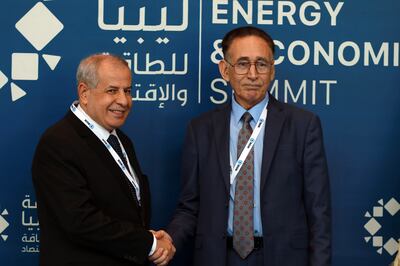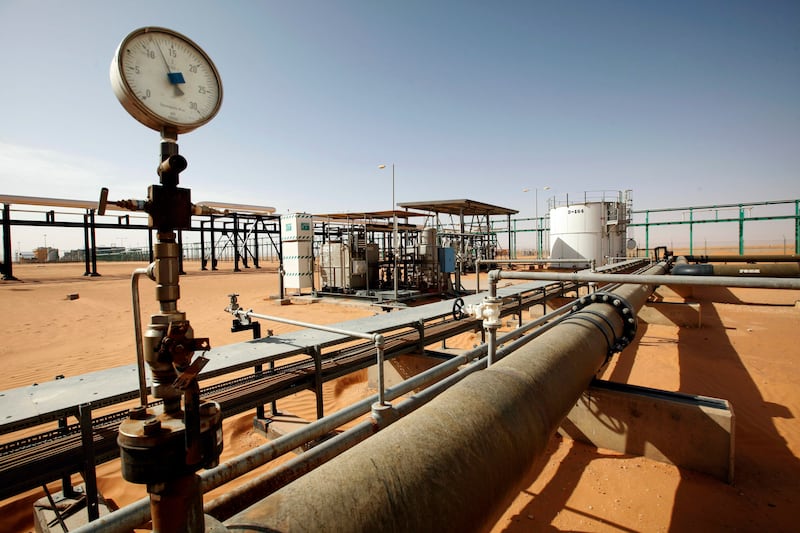Libya is designing an oil and gas bidding round, expected to be held in the fourth quarter of this year, that is “very attractive” for investors, a member of the National Oil Corporation’s board said.
The licensing round would be the country’s first since 2007 as it looks to ramp up production and exports after more than a decade of political instability that paralysed exploration activity for new resources.
“We're working towards the objective quite aggressively right now,” said Khalifa Abdulsadiq at the Libya Energy & Economic Summit in Tripoli on Sunday.
“We're developing the database, identifying the areas and also benchmarking the fiscal terms against the neighbouring countries [and] across the region,” he said during a panel session.
Mr Abdulsadiq said the bidding round was “long overdue” and that it would be key to sustaining Libya’s production levels in the future.
He also said that the NOC could reach its short-term production target of 2 million barrels per day using the company’s existing assets.
The state-owned energy company produces about 1.2 million bpd currently.
“What we need to do is just reinforce the brownfield development and reactivate shut-in [oil] wells,” Mr Abdulsadiq said.
He also said the country’s pipelines and harbours, which were originally built in the 1960s, needed a turnaround.
Libya, which has the largest crude reserves in Africa, has had little peace since the 2011 Nato-backed uprising against Muammar Qaddafi and it split in 2014 between warring eastern and western factions. Major fighting stopped after a ceasefire in 2020.
An oil blockade that year imposed by eastern Libyan military leader Khalifa Haftar cost Tripoli $6 billion in lost oil revenues.
Protests by loosely affiliated local groups have also threatened to bring the country’s oil production to a standstill.
Last week, the NOC declared force majeure at the 300,000 bpd-Sharara oilfield, the country’s largest, after its shutdown by protesters.
Over the past few days, some groups have also threatened to shut down two oil and gas facilities near the Libyan capital Tripoli.
Libya is “extremely competitive” from a hydrocarbons perspective and in its access to premium markets, but infrastructure can be further improved, Antonio Baldassarre, managing director of Eni North Africa told attendees during the same panel discussion.
Mr Baldassarre also said that Libya needed to regain the confidence of services companies, who help energy companies with exploration and the transportation of petroleum and gas to refineries.
Project funding
Libya's government has committed $12 billion to step up oil production in the country, with another $5 billion expected from the Libyan Investment Authority (LIA).
In a separate session, Libyan Economy Minister Mohamed Al Hwej said LIA's assets frozen by sanctions overseas could be used to invest in the country’s oil sector.

Several assets of the sovereign wealth fund were frozen in 2011 as part of an international crackdown on the regime of the late Libyan leader Muammar Qaddafi.
“We don't want to see these frozen assets kept in the European banks without being used and they are actually losing some value,” Mr Al Hwej said.
“We can find a system or mechanism to be able to use it only for the oil sector. It could be with conditions,” he added.
Libya plans to more than double its gross domestic product to $250 billion, with the oil and gas sector representing 40 per cent of the economy, the minister said.






